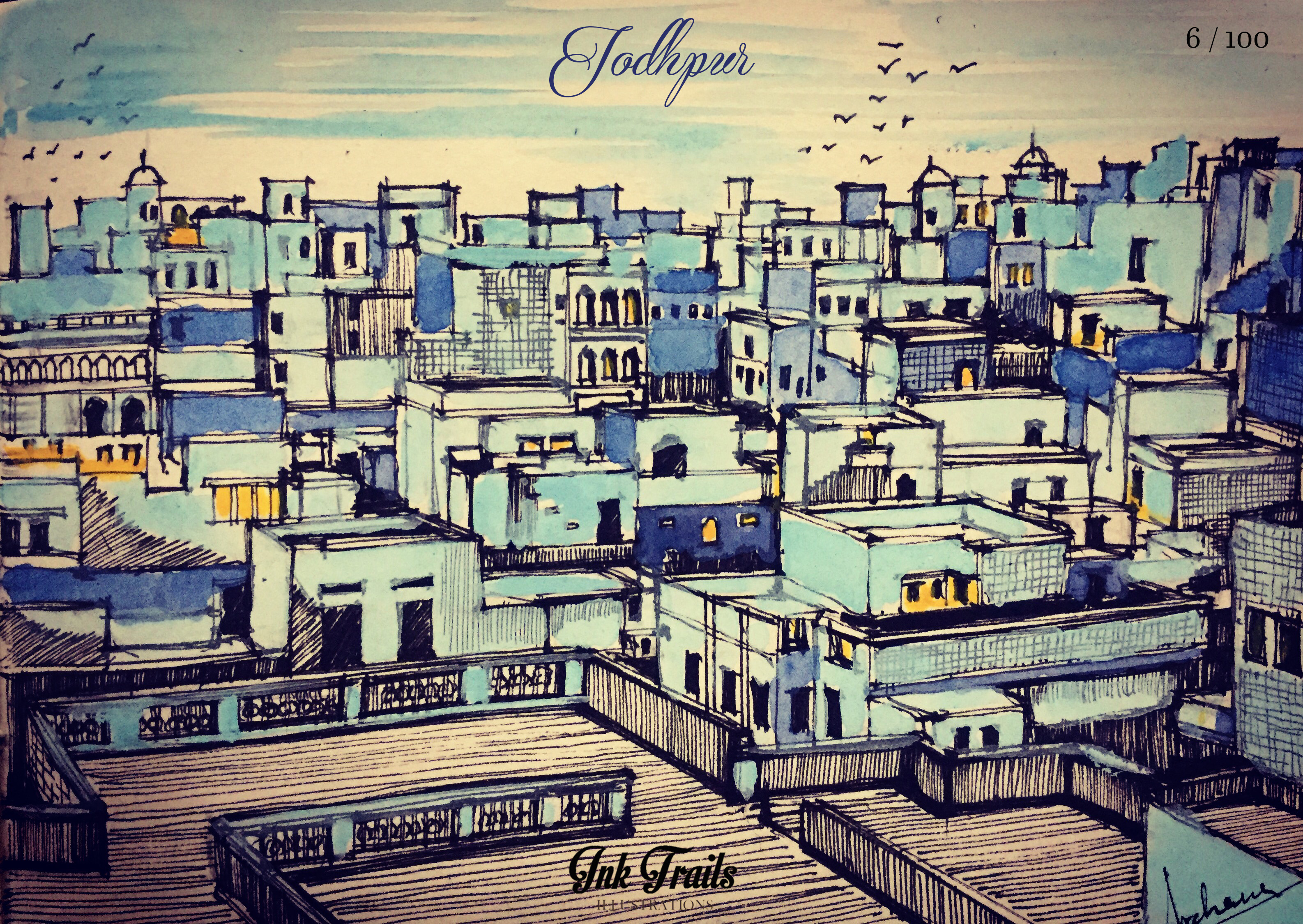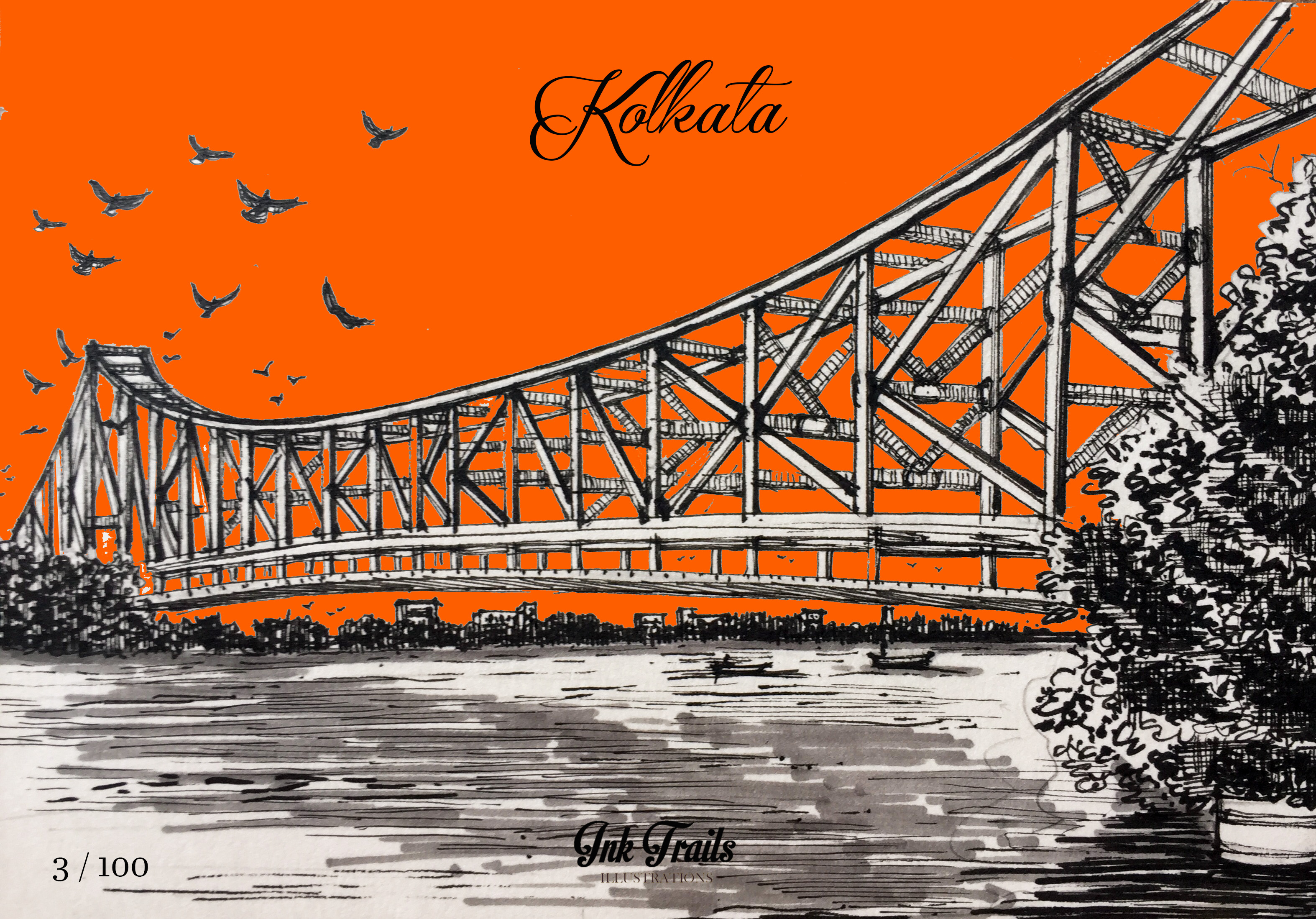“I prefer to walk around in the city, instead of being stuck in the traffic” Archana Pereira, founder of the Ink Trails Illustrations tells us, “and so I notice a lot of details in the architecture, in the lifestyle of the people, humour in the day to day activities on the streets… I try capturing all of this, and freezing that moment as a memory.”
Documenting an architect’s impressions of the Indian city, Ink Trails Illustrations lends life to streets that don’t often garner attention beyond their inhabitants and their lives. Committing to paper various urbanscapes across the country – celebrating the animate and the inanimate alike – Pereira’s work is vibrant and engaging, with little titbits of city life captured perfectly in her crisp lines and dense textures. Her use of colour is often sparse but impactful, solid swathes accentuating the subject and throwing intricate details in stark relief.
“I’ve always loved sketching,” says Pereira, “but this idea of sketching different cities came about when I was pursuing my Masters Degree in Glasgow, working on a project for my elective – Drawing as research. It was a series of sketches of a particular area in Glasgow – like a walk-through, where one sketch by one sketch it took you around that area. Ultimately, Ink Trails materialized in September 2016.”
Her most recent (and on-going) series of illustrations – 100 days of Incredible India – documents the breath-taking variety of the country, encapsulated in its buildings, its festivals, its culture and even its natural landscapes, via a series of 100 illustrations over 100 days, from the doorways of Havelis in Jaipur to the backwaters of Kerala.
 Bio: Archana Pereira, an architect by qualification, runs the art studio Ink Trails Illustrations. She completed her Bachelors in Architecture from the University School of Design, Mysore, and Masters from Glasgow School of Art. Her work focuses on travel-based illustrations and related merchandize, as well as commissioned artworks. Her work also been featured in the Kala Ghoda Art Festival, in February 2017.
Bio: Archana Pereira, an architect by qualification, runs the art studio Ink Trails Illustrations. She completed her Bachelors in Architecture from the University School of Design, Mysore, and Masters from Glasgow School of Art. Her work focuses on travel-based illustrations and related merchandize, as well as commissioned artworks. Her work also been featured in the Kala Ghoda Art Festival, in February 2017.
You can see more of her illustrations on her personal blog, Facebook, and Instagram.
















6 Responses
Good effort
Thankyou:) You can have a look at my work here : http://www.facebook.com/inktrails.in
Liked you work very impresive
Thankyou:) Do follow my page here : http://www.facebook.com/inktrails.in
Loved your style
Looking forward to more
Thankyou:) You can have a look at my work here : http://www.facebook.com/inktrails.in